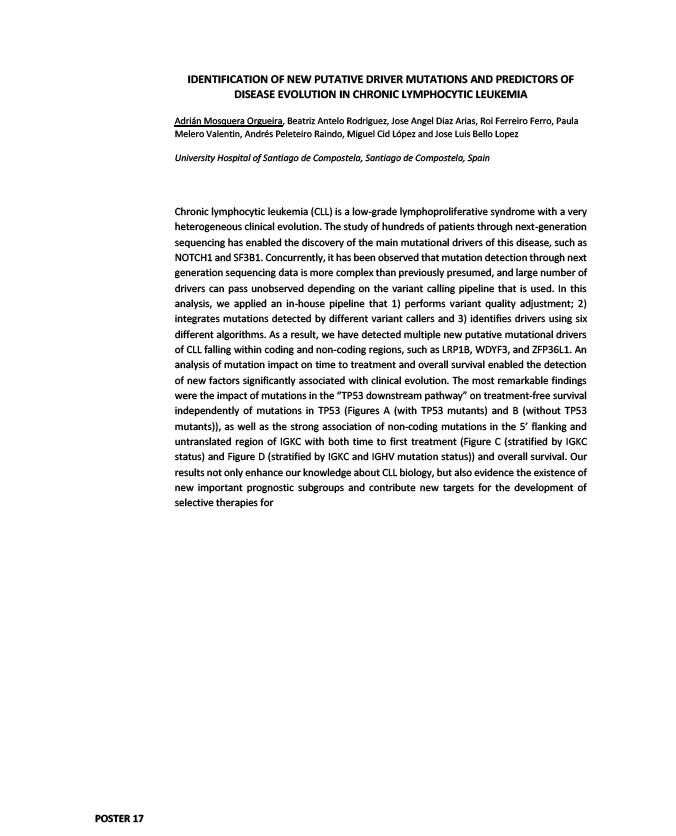
IDENTIFICATION OF NEW PUTATIVE DRIVER MUTATIONS AND PREDICTORS OF
DISEASE EVOLUTION IN CHRONIC LYMPHOCYTIC LEUKEMIA
Adrián Mosquera Orgueira, Beatriz Antelo Rodriguez, Jose Angel Diaz Arias, Roi Ferreiro Ferro, Paula
Melero Valentin, Andrés Peleteiro Raindo, Miguel Cid López and Jose Luis Bello Lopez
University Hospital of Santiago de Compostela, Santiago de Compostela, Spain
Chronic lymphocytic leukemia (CLL) is a low-grade lymphoproliferative syndrome with a very
heterogeneous clinical evolution. The study of hundreds of patients through next-generation
sequencing has enabled the discovery of the main mutational drivers of this disease, such as
NOTCH1 and SF3B1. Concurrently, it has been observed that mutation detection through next
generation sequencing data is more complex than previously presumed, and large number of
drivers can pass unobserved depending on the variant calling pipeline that is used. In this
analysis, we applied an in-house pipeline that 1) performs variant quality adjustment; 2)
integrates mutations detected by different variant callers and 3) identifies drivers using six
different algorithms. As a result, we have detected multiple new putative mutational drivers
of CLL falling within coding and non-coding regions, such as LRP1B, WDYF3, and ZFP36L1. An
analysis of mutation impact on time to treatment and overall survival enabled the detection
of new factors significantly associated with clinical evolution. The most remarkable findings
were the impact of mutations in the “TP53 downstream pathway” on treatment-free survival
independently of mutations in TP53 (Figures A (with TP53 mutants) and B (without TP53
mutants)), as well as the strong association of non-coding mutations in the 5’ flanking and
untranslated region of IGKC with both time to first treatment (Figure C (stratified by IGKC
status) and Figure D (stratified by IGKC and IGHV mutation status)) and overall survival. Our
results not only enhance our knowledge about CLL biology, but also evidence the existence of
new important prognostic subgroups and contribute new targets for the development of
selective therapies for
POSTER 17